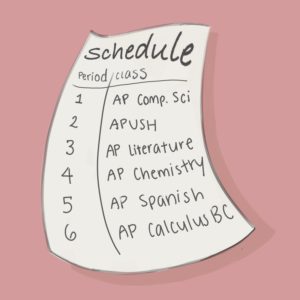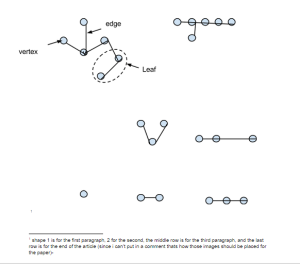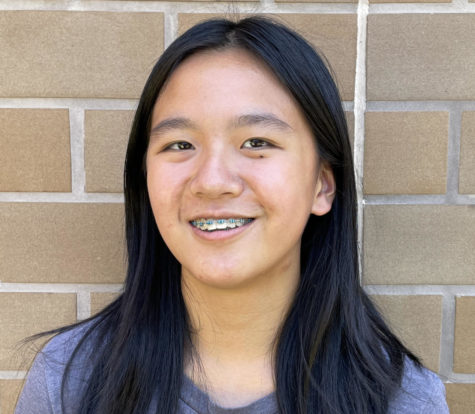Blind to its beauty: the need for math reform in American education
The current education system fails to emphasize mathematical sense and highlight the beauty of math.
March 25, 2022
Looking at the first half of the headline, I realize just how unpopular my belief could be. Out of all the words I could have chosen to describe math, I settled with “beautiful,” which sounds too emotional, yet no word fits better. Frustrating, annoying, time-consuming and heartbreaking? I don’t deny this. But perfect, satisfying, alleviating and beautiful — those words fit at the right times.
A few years ago, I discovered why numbers divided by zero are named as “undefined.” I was expecting an intricate proof or a clear set of work shown on a whiteboard. Yet all that the video demonstrated was the definition of the word “undefined” and the patterns that reinforce that definition. That value was purely undefinable, as there was no one definition that fit all the patterns for various sets of numbers. It was such simple reasoning, but much more than the common “you can’t divide by zero” phrase that I had come to memorize in class.
It was the simple question of “Why?” that piqued my interest and grew my fondness for the vastness of math and its intricacies. Knowing the reasoning behind numbers being undefined hasn’t gotten me to greater lengths in life or in math, but nowhere has it been established that we learn mathematical reasoning for these purposes.
Students learn about why certain appeal strategies work in English and why certain reactions have specific results in Chemistry, so what’s stopping them from learning beyond the formulas in a subject that can’t always fit in a few equations and values? And what’s stopping math from being more than just right and wrong answers all culminating towards an assessment of skill? The way that the teaching and standards of this subject have evolved over time in the U.S. has left minimal implementation of the hopeful concept-driven reforms we once desired, leaving us with a system that is still in need of vast reform in order to appreciate its beauty.
Starting in the classroom
Part of appreciating the beauty in math is discovering it on your own, but that’s not a chance we are always given. Math education tends to follow a dearly-treasured script of “I, We, You,” consisting of a teacher’s demonstration of a new topic, a class attempt at solving an example problem and a new set of problems to figure out on your own.
Yet this has become a redundant process where the learning aspect has drifted away and students are left with the math being given to them. As soon as they encounter a variation of the same problem, they tend to get stuck.
That’s why Magdalene Lampert, an elementary-school teacher in the 1980s, set out to challenge the method and make a more effective learning experience, according to the New York Times. She replaced the “I, We, You” structure with a so-called “You, Y’all, We” structure, assigning a problem of the day for the students, then peer groups and then the whole class that ultimately joined in on a process she calls “sense-making.” It allowed for collaboration on misunderstandings and wrong answers, and observers studying Lampert’s classroom found that her students were learning “an unusual amount of math,” having a new-found understanding of algorithms that they didn’t have before.
“Even Americans can become the so-called math people we don’t think we are,” the New York Times adds.
This same “You, Y’all, We” structure was what my eighth grade teacher followed. My teacher instructed all of the students to figure out problems and derive formulas on their own before they were given an extensive lesson. It arguably created a strong foundation for my future years, as my peers and I had the opportunity to discover math instead of copying it down on paper. The lack of spoon-feeding increased the likelihood that I sensed patterns and pathways as I explored them on my own.
That aspect of math was flourishing in such an environment, but despite its proven success, Lampert’s system hasn’t been one that has been emphasized in American education. A study analyzing classroom environments found that the proficiency-and-above rate was 34% for teachers “using questioning and discussion techniques” and just 30% for “communicating with students.” While it may seem like a substantial amount of teachers, it’s clear that the discussion and discovery aspect of math isn’t one that’s being drastically emphasized.
The U.S. is behind
This lack of learning in these environments is reflected in the international PISA (Programme for International Student Assessment) assessments, a worldwide study to evaluate several education systems. The Scientific American points out that the PISA assessment in 2012 found that “memorizers” were the lowest scorers, and they add that the U.S. had more memorizers than South Korea, a country “long thought to be the paradigm of rote learning.”
Overall math scores are substantially lower in the U.S., especially when considering the infrastructure and budgets available. The U.S. was ranked 36th in the math portion of the 2018 PISA out of the 79 countries and regions that participated.
In an attempt to get the U.S. stronger in math, Common Core was implemented in 2009, a math reform that placed more emphasis on conceptual understanding and offered freedom to teachers to explain various methods to solve certain problems. Prior to the creation and adoption of Common Core, the “math wars” were occurring: A period of time starting in the 1990s where the teaching of mathematics was under heated debate. The debate was focused on traditional mathematics, which followed the “I, We, You” structure and focused on standard arithmetic practices. On the opposing side stood reform mathematics, which was based on principles that highlighted and expanded on the “new math” reform that had started in the previous decades to make curriculums focus on understanding instead of memorizing. It’s this mid-20th century development of “new math” that ultimately led to the Common Core system that now exists in 46 states. But despite the implementation of these standards, the Brookings Institution finds that there is no “convincing evidence” that exists to show that the standards had “a significant, positive impact on student achievement.”
Many take the chance to say that it’s perfect evidence that Common Core is ineffective and has failed to work across the U.S. despite the heavy effort being put in. But that doesn’t mean that Common Core itself is ineffective — more so that its implementation isn’t good enough. With textbooks diverting away from the old-fashioned math that a majority of parents and teachers are aware of, teachers are left without an understanding of how to teach certain methods, and parents are left with the inability to aid their children in problem-solving.
Kevin Knudson, a professor of mathematics at the University of Florida writes in The Conversation that this growing focus on conceptual understanding and multiple on-hand strategies should be welcomed as it could lead to better problem-solving skills later on. While Common Core may not be a perfect system, it’s far better than the past path of learning, one that the masses agree was never effective at all. Giving a chance to such a development could give the U.S. proper math reform. A possible example to look towards is Singapore, a country that has consistently had top scores in math with its students always one step ahead in math success.
Singapore’s successful math system
At first glance, it may look like there’s alternative reasons for Singapore’s success, yet in all the places where “Singapore math” has been implemented in the U.S., such as schools in Los Angeles, Massachusetts and North Carolina, there was an improvement in test scores as well as one school finding a possible increase in students’ enjoyment of the subject.
The “Singapore method” was created in the 1980s, according to the Financial Times, with its main contributions coming from an American educational psychologist, Jerome Bruner. He posed that math should be learned with real objects, pictures and symbols at the end, which is the fundamental concept in Singapore math as well.
The head of the OECD’s education assessment programme, Andreas Schleicher, adds, “When you look at England and the US, [their curriculums] are mile-wide and inch-deep. They teach a lot of things but at a shallow level. Mathematics in Singapore is not about knowing everything. It’s about thinking like a mathematician.”
This mindset of “thinking like a mathematician” is needed when thinking about what’s necessary in math reform. With the standard’s based environment and test-heavy curriculums posed by American education, making such a change to a more mathematician-based system seems extremely difficult. In an education system that emphasizes tests, it doesn’t seem like we can switch to not “knowing everything” and still be successful. The mistake in that logic, however, is the assumption that test scores depend on the amount of knowledge one has. But as soon as we understand a certain concept or idea in its full depth, why memorize if you can just apply and connect concepts? Why can’t we think like a mathematician to solve unknown problems?
And this way of thinking like a mathematician, or, in other words, mathematical sense, is one of the most crucial aspects of math education, as well as the aspect that needs the most attention and reform.
Focusing on mathematical sense
By placing the focus on the thinking process instead of the amount of knowledge one gains, students develop more and more mathematical sense, which is important in our understanding of math.
Eddie Woo, an Australian high school math teacher, became a YouTube star a few years ago due to the videos of some of his unconventional classroom lessons that many of his students say have been effective, especially by turning a hatred for a frustrating course into an interest into a vast and complex subject.
“Mathematics is a sense just like sight and touch… our sense for patterns, relationships and logical connections,” Woo said in his Ted Talk.
And this “sense” isn’t just a sense for “math people.” A common response to questions about a student’s math experience tends to be, “I’m not a math person.” But mathematical sense has nothing to do with who you are. Instead, it’s a sense that has more in common with our other five than it appears to.
“You can learn to perceive the mathematics around you with time and the right patience,” he says. “I drew a short straw in the genetic lottery when it came to my eyesight. Without my glasses, everything is a blur. I’ve wrestled with this sense my entire life, but I would never dream of saying, ‘Well, seeing has always been a struggle for me. I guess I’m just not a seeing kind of person.’”
In fact, mathematical sense at the fundamental level is a sense that requires no education at all and is an inherent sense in many of us. In the 1970s and 80s, cognitive scientists compared the schooled and unschooled. They found out that in a dairy factory, the unschooled did basic tasks involving some form of math with virtually no errors while the schooled made many errors. Another study in Brazil found that the unschooled could solve complex problems in their head when calculating bills and making change, yet couldn’t correctly write the work on paper.
Acknowledging these two studies, the New York Times suggests that “a startling cause of Americans’ innumeracy: school.”
There are no obstacles to gaining mathematical sense unless we put those barriers in ourselves. And once we overcome that self-made barrier, it’s up to the education system to focus on enabling students to gain this mathematical sense. Without harnessing it, math will continue to feel like a burdening subject of a vast amount of numbers, equations and theorems, instead of a subject of logical connections and explorations.
The beauty of mathematics
At the end, no matter how the education system is reformed, there needs to be a general social shift in the idea of the “usefulness” of certain subjects. A student may point out that they are most likely not going to be using integrals 40 years from now, but future implementation doesn’t have to be the point of gaining mathematical sense now.
Prominent mathematician Manil Suri says, “Think of it this way: you can appreciate art without acquiring the ability to paint, or enjoy a symphony without being able to read music. Math also deserves to be enjoyed for its own sake, without being constantly subjected to the question, ‘When will I use this?’”
Once we move beyond that question, we come to realize that math surrounds us and satisfies us. The aesthetics of symmetry, the geometric patterns in art, simply calculating change– they all center around math. And even as the math gets more complicated, it’s simply just more equations, concepts and numbers for us to dive into and experiment with.
Moving beyond the idea of practicality in math is important in realizing the beauty of it. Changing the quality of class environments and what students learn in those environments are essential for this reform. Learning interesting theories and puzzles can be accompaniments in our education, especially in a year where students of all ages have to catch up on several lost weeks of learning after a whole year of online schooling.
It’s ultimately our education system that determines how we think about math as a subject, no matter how many times one tries to convince someone that they should change their way of thinking. If that education is done right, maybe the time will come where there’s appreciation for a beautiful subject.
Looking Forward
First, there needs to be more focus on helping teachers get to the new conceptual understanding of math. It’s easy to forget that teachers have learned math in a different way, so focusing on teachers adjusting to the reform is important for student’s to adjust to the reform as well.
Second, the classroom environments require change. Just as we discuss reasoning in history, students and teachers have to collaborate on mathematical reasoning as well. And, by shifting from answer-getting to true problem-solving, students get a better understanding of why math is the way it is.
Third, the understanding of math itself still needs a push towards the conceptual side with more answers for the question of “why” instead of the question itself. Using visuals from the start, connecting various topics such as geometry and algebra in the middle and expanding on theories through the end is the way to change the perception of math as a burden and towards another world to dive into.
While we are blind towards the beauty of math right now, transforming the education system of a more-than-capable country is the push we need towards a more accepting environment for a subject that struggles with affection in the status quo. Frustrating, annoying, time-consuming and heartbreaking– I don’t deny this.
But perfect, satisfying, alleviating, beautiful or even just “better”– that’s a realization for all of us to come to, someday.






